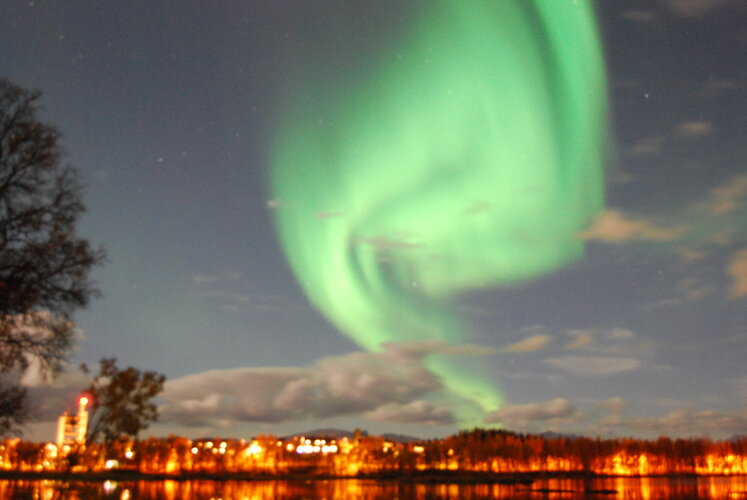The saying goes that a picture is worth a thousand words. Is it worth even more when it helps tackle a long-standing mystery?
Back in 2013, Cluster scientist Elena Kronberg was at a workshop in Tromsø, Norway. One evening the aurora forecast looked promising, so Elena sought out a dark spot. The sky did not disappoint. As unusual green spirals swirled overhead, she captured this beautiful photo, and became curious to find out how they are created.
Fast forward eight years, and Elena tasks her bachelor’s student Katharina Maetschke at Ludwig-Maximilians-University Munich to explain the spiral shape using data from ESA’s Cluster and NASA’s Themis missions. The pair believe that this is the first time ever that an amateur photo of an auroral spiral from the ground is compared with data from satellites.
Katharina and her small team of collaborators found an intriguing match: at precisely the same time that Elena saw the spiral in the sky, Cluster saw a spiral moving towards the region above Tromsø in the magnetic bubble that surrounds Earth. Their proposed theory is that fast particles from the Sun formed a spiral in Earth’s magnetic field. They then swirled down the magnetic field lines and mapped corresponding auroral spirals in the sky.
This is one possible explanation, but to really discover how auroral spirals are created, scientists need to connect more pictures from the ground with data covering Earth’s magnetic field from space. Unfortunately, Elena’s photo was the only one that this team had to work with. Future research would benefit from lots of photos from different locations; that is why the International Space Science Institute is working on coordinating citizen science observations of the auroras.
The next couple of years are particularly promising for watching auroras and spotting spirals, as the Sun approaches its peak in activity. Roughly every 11 years, more bursts of energetic particles are sent in our direction, slamming into Earth’s magnetic field, and lighting up the sky with stunning colours and shapes.
The rise in activity is great timing for the ESA/CAS Smile mission, due to launch in 2025 to understand more about the Sun-Earth connection. Smile will image the auroras continuously in ultraviolet light, connecting what it sees to its X-ray views of Earth’s magnetic field.
Though the Cluster mission is coming to an end, with the first of its four satellites set to safely reenter Earth’s atmosphere this September, the data it has collected over the last 24 years will remain valuable for future research. Smile will build upon and complement Cluster and the scientific discoveries it has already enabled.
Elena and Katharina’s research, titled ‘A possible mechanism for the formation of an eastward moving auroral spiral’, was published in Frontiers in Astronomy and Space Sciences.
[Image ALT text: A photo of a bright green aurora above city lights, taken from across a body of water. The aurora covers most of the sky and forms a distinct spiral shape. The city lights are very warm and orange. On the left of the image is a tree, almost as tall as the image itself. A few clouds are scattered across the lower and right parts of the sky.]



 Image:
Photo of auroral spiral
Image:
Photo of auroral spiral